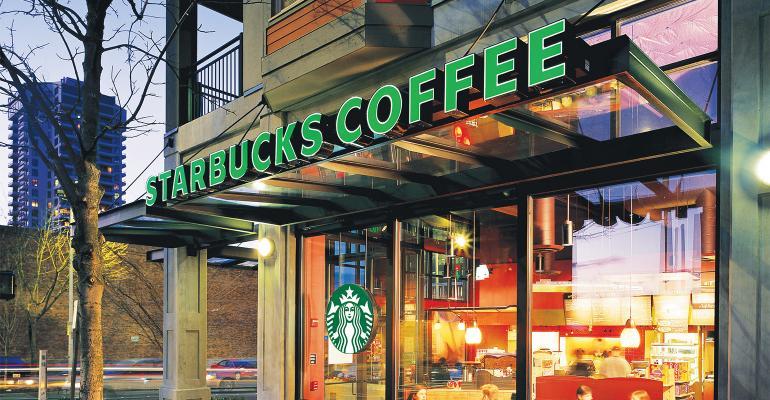Starbucks was a tale of two coffee companies for the third quarter ended July 2: While international stores saw double-digit sales growth driven by China’s 46% same-store sales growth, U.S. growth did not fare as well, and transactions were just up 1%. U.S. same-store sales were up 7% driven primarily by price increases, beverage customization, and increased food attachment from customers, which led to record weekly sales, despite the traffic dipping.
According to Starbucks, tighter margins in the North America markets can be attributed to investments in improved store experience and staffing as the Seattle-based coffee company moves full-speed-ahead with its reinvention plan, which was first introduced last year as a way to improve operations. A significant part of that plan is to listen to employees’ needs for better hours, benefits, and working conditions, all of which have been major complaints of the Starbucks Union.
“We’re seeing evidence that we are executing better barista attrition — where we are already industry-leading — it has improved further by 11% year over year,” CEO Laxman Narasimhan said during Tuesday’s earnings call. “Through scheduling and staffing improvements, we are beginning to increase the number of hours per partner in store critical to running great stores and improving partner engagement while also improving productivity…. We’re focused on meaningful improvements in staffing and scheduling, to ensure that we have the right combination of the right partners in the right roles, with the right hours to fuel both engagement and productivity.”
These store improvements include better equipment, like the continued rollout of the Clover Vertical Brewer, and moving forward with digital menu boards in all locations, both of which are meant to improve productivity and drive up same-store sales.
Another major investment for Starbucks is beverage innovation, as cold beverages are still the top-selling menu category for the brand, and new menu items like the lineup of frozen Refreshers, which were just rolled out this summer, are balancing out traditionally-slower dayparts like mid-afternoon. The company also plans to continue diversifying its store portfolio to fit differing demographic and geographic needs, with more details on that plan to come soon.
“Our focus on these investments will remain on improving the partner experience while elevating the customer experience and delivering productivity gains,” Narasimhan said. “We are revamping our approach to further accelerate digital innovation, including payment and delivery enhancements in terms of speed, and personalization, which we believe leads to greater habituation by our customers.”
Starbucks’ net revenues were up 12% in Q3 to $9.2 billion. The company’s net income for Q2 increased 25% from $913 million or $0.79 per share to $1.2 billion or $0.99 per share. The company opened 588 net new stores in Q3, ending the quarter with 37,222 stores globally.
Contact Joanna at [email protected]





